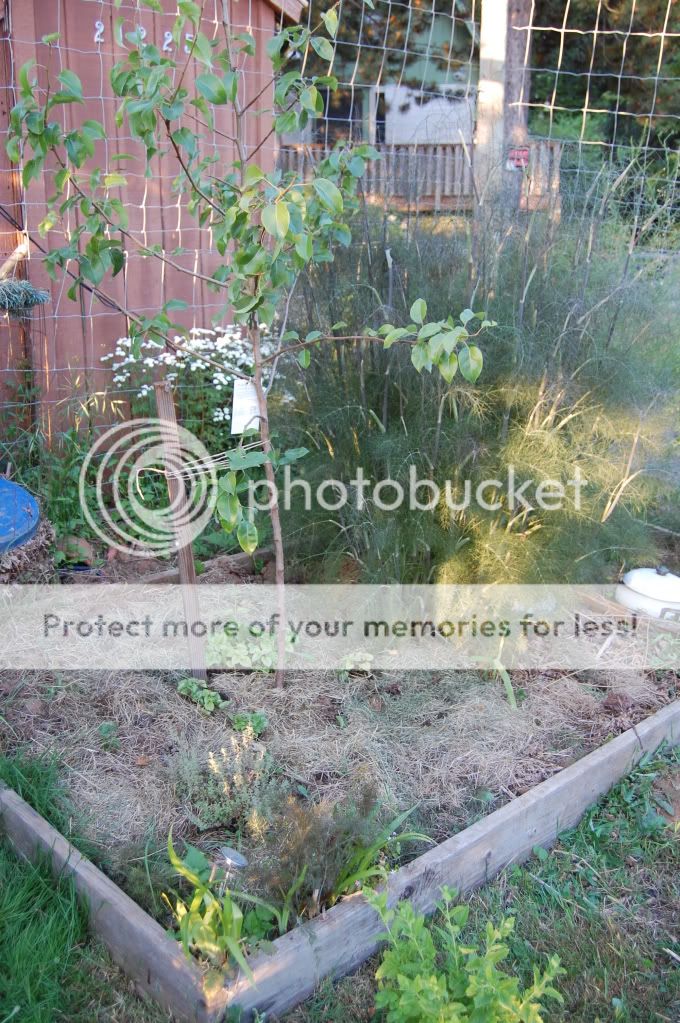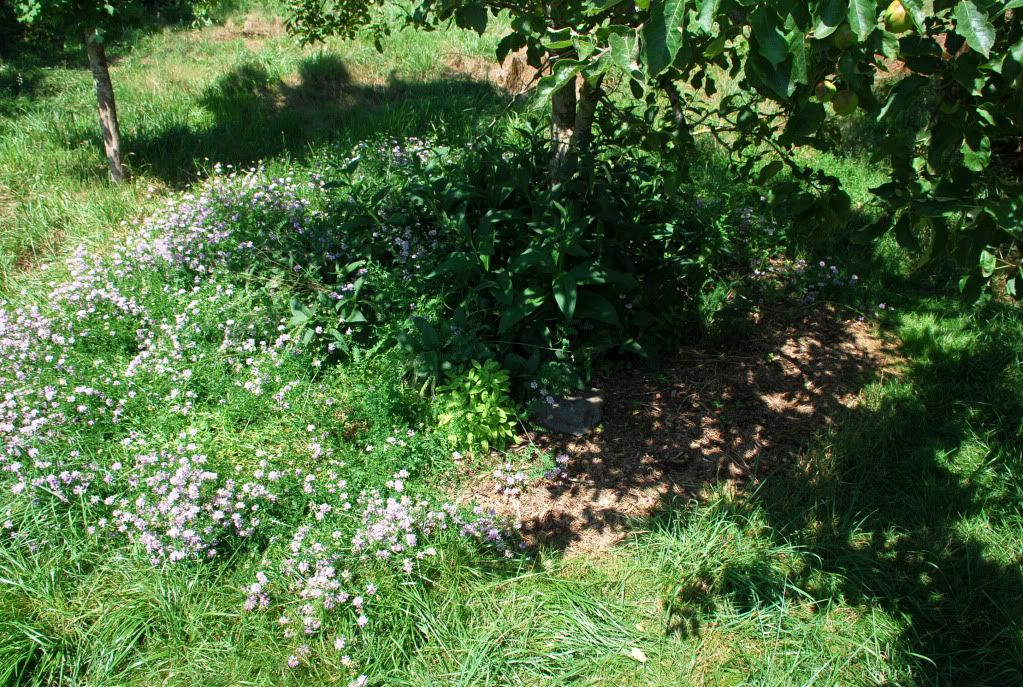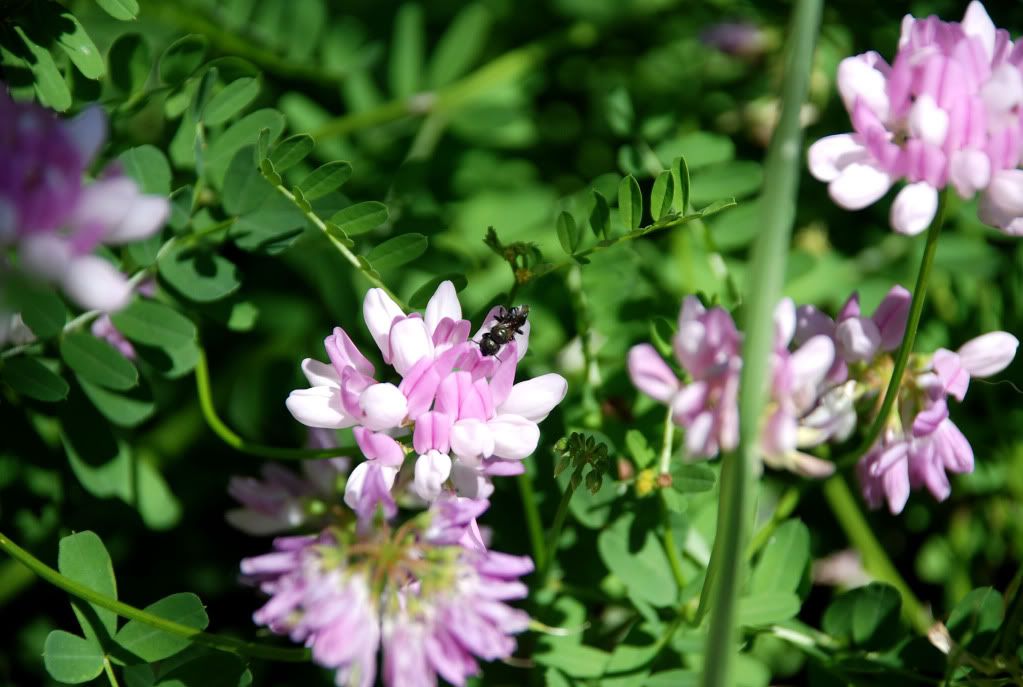
 9
9




 9
9




My books, movies, videos, podcasts, events ... the big collection of paul wheaton stuff!
 8
8




Bytesmiths wrote:
My favourite fruit tree guild is to combine insectaries, bug eaters, and sentinels.
Fruit trees are top-feeders. They have spreading roots that mirror the branches. So you want to get rid of the grass underneath.
Plant sentinels around the drip line -- most tubers are good for this. You want something that is aleopathic, to keep the grass from invading the fruit tree's feeding zone. My favourite sentinel in this case: sunchokes, because they grow up quickly, which works with the chickens (to come), and they are edible. You can take at least every other one in the fall, and they'll spread back out in the spring. They also fall down and self-mulch in the winter, further feeding the tree.
Next, I like insectiaries inside, especially dynamic accumulators with deep tap roots. You let these self-compost, as they bring up nutrients from deep underneath and spread them on the surface where the fruit tree can get at them. Cut them down in-place a few times a season. My favourites: borage, comfrey, but even thistles will do.
Finally, get some chickens. A number of apple parasites spend part of their life-cycle in the ground. Chickens will eat these, and they will dig up the grass under the tree, and distribute the bugs as nitrogen-rich fertilizer, and the tree (and the sentinels, if you have tall, fast-growing ones) shelter the chickens from raptors.
I've used this several times, and it works nicely.
Gary
 7
7




Brenda
Bloom where you are planted.
http://restfultrailsfoodforestgarden.blogspot.com/
 8
8





 3
3





land and liberty at s.w.o.m.p.
www. swompenglish.wordpress.com
 2
2




 2
2




Susan Monroe wrote:
Marigolds will help to suppress nematodes (if you have that problem), but only if you use the small French-type varieties (Tagetes patula), not the tall, showy ball-headed ones (Tagetes erecta) which don't affect nematodes.
One of the largest competitors of fruit trees is plain old grass, wild or domestic.
Sue
http://www.greenshireecofarms.com
Zone 5a in Central Ontario, Canada
 3
3




 5
5







 6
6




Susan Monroe wrote:
...
One of the largest competitors of fruit trees is plain old grass, wild or domestic.
 3
3





 2
2




Brenda
Bloom where you are planted.
http://restfultrailsfoodforestgarden.blogspot.com/
 2
2




 2
2




x96mac wrote:
Adunca - Thanks for the pictures! I have two rows of trees, 4 apple and 4 peach. I guess my guild will be in more of a rectangular shape beneath all the trees. We inherited them from the previous owner and the post here are really helping me figure out what to do with them. Does planting a guild stop the need for spraying? We have small children and I don't want to spray. Also, how do you stop the mint from spreading? or do you want it to?
This year will be a learning year and I'm hoping things will start to come together more next year. We still have a ton of grass under the trees. Should I cover the grass with hay? Or is that more of an early fall thing to do?
Thanks!
From clueless

 3
3




Paul Cereghino- Ecosystem Guild
Maritime Temperate Coniferous Rainforest - Mild Wet Winter, Dry Summer
 3
3




Brenda
Bloom where you are planted.
http://restfultrailsfoodforestgarden.blogspot.com/
 2
2




My books, movies, videos, podcasts, events ... the big collection of paul wheaton stuff!
 1
1






Brenda
Bloom where you are planted.
http://restfultrailsfoodforestgarden.blogspot.com/
 5
5







My Blog, Natural History and Forest Gardening
www.dzonoquaswhistle.blogspot.com
"Listen everybody, to what I gotta say, there's hope for tomorrow, if we wake up today!" Ted Nugent
"Suck Marrow" Henry D Thoreau




I have looked online and there are not many photos of mature fruit tree guilds - but quite a few photos of immature guilds.paul wheaton wrote:
Anybody have pics of mature fruit tree guilds?

 1
1





Brenda
Bloom where you are planted.
http://restfultrailsfoodforestgarden.blogspot.com/
 3
3




 1
1




 1
1




Brenda
Bloom where you are planted.
http://restfultrailsfoodforestgarden.blogspot.com/








 1
1




Brenda
Bloom where you are planted.
http://restfultrailsfoodforestgarden.blogspot.com/
 1
1




Brenda
Bloom where you are planted.
http://restfultrailsfoodforestgarden.blogspot.com/
 2
2




 1
1




 3
3




 1
1




Happiness is not a goal; it is a by-product. - Eleanor Roosevelt, diplomat and author (1884-1962)




Brenda Groth wrote:
here is a photo of a deep shade guild under a self seeded adult apple tree in our back yard, this one has no real food crops other than violets and daylillies in it, as it is on a north facing bank in very deep shade..but it does have hostas, burdock, daylilliy, solomons seal, violets, iris, ajuga, vinca, oriental poppies, various composites, as well as other things.
above this is the raised (4' high) drainfield area that has 6 other baby apple trees all in mixed beds with shrubs, perennials, vines, ground covers, etc..but they are all, as in the other photographs, one or two year old trees, so they are not mature guilds.
all my guilds for fruit trees are young as we had to start over after our housefire and giving our other garden property to our son to put his house on...so this is the only example i have now of a mature fruit (apple) tree on our property..i have other guilds with non fruit trees, but this is the only mature fruit tree guild other than one in a field with an alder shrub growing out of the same hole as an apple and some willow, alder, autumn olvie and other perennials and wildflowers around it




www.thehappypermaculturalist.wordpress.com
 1
1





Idle dreamer
 3
3











 1
1





|
And then the flying monkeys attacked. My only defense was this tiny ad:
A PDC for cold climate homesteaders
http://permaculture-design-course.com
|

